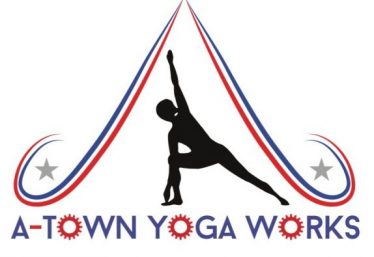
What is the difference between Bikram Yoga and Hot Yoga?
About Bikram Yoga “The Original Hot Yoga!”
Bikram Yoga was created the early 1970’s by Bikram Choudhury, founder of the internationally renowned Yoga College of India. Bikram is a life-long yogi who began practicing yoga at the age of 4 and won the first of his three National India Yoga Championships at the age of 13. When Bikram was just 17 years old he suffered a an accident while weightlifting that severely damaged his knees – so much so that doctors predicted he would never walk again. Undaunted by the prognosis Bikram was convinced that he would be able to heal himself through yoga. With the support of his first teacher and founder of the College of Physical Education in Calcutta, Bishnu Ghosh, Bikram began an intense daily practice of Hatha Yoga. He was completely healed after 6 months of consistent practice.
The experience of re-building and healing his own body inspired Bikram to develop a sequence of Hatha Yoga postures that would allow other practitioners to experience the same physical and benefits that he gained from his own practice. Almost four decades have passed since Bikram first introduced this unique form of yoga to the United States and the world. It is one of the fastest growing yoga practices with over hundreds of independent studios operating around the globe. Millions have flocked to this practice seeking a respite from the hustle and bustle of daily life and a departure from other forms of exercises, which tear down the body rather than build it up.
From the early 1970s until approximately 2010, Bikram Yoga – also known as the 26 & 2 – was equivalent to “hot yoga”. Its unparalleled benefits and worldwide popularity inspired many to try to imitate it.
So….since the early 2010s, many other “hot yoga” and heated fitness trends have proliferated, especially in North America. However, it is not the heat that makes this yoga work. The sequence, principles, and practice methods create the transformative benefits of the “90-minute miracle”.
Bikram Yoga remains the original and time-tested therapeutic heated hatha yoga. It is associated with scientifically proven health benefits and is truly accessible to all ages and bodies.
Class Description
Bikram Yoga classes are 90 minutes in length and place in a room that is heated to 105°F with a humidity level of 40%. The heat helps to improve your flexibility and your lung capacity. It also provides you with an anaerobic workout that gets your heart pumping. The class consists of 26 postures and 2 breathing exercises. The classes are not easy. And it does take time to adjust to the heat and the postures. However, the physical and mental benefits that come with consistent practice are well worth the effort. If you set an intention to bring your personal best to the hot room there is no limit to what you can accomplish!
Traditional, Therapeutic Yoga Methods
It will not take long for you to experience the difference between the Bikram Yoga method at BYCA and the various types of hot yoga. This is a rough comparison – as “hot yoga” can be one of many dozens of things – but we hope it will give you some idea of the differences.
| Bikram Yoga and Ghosh lineage | Hot Yoga | |
| Repeated Beginner Sequence (26 postures and 2 breathing exercises) for first several years | Various sequences depending on the teacher | |
| Comprehensive treatment of every muscle group, joint, and major system in the body | Varying sequences may or may not cover each muscle and system | |
| Method accessible to ages 70+, men/women | Often mostly accessible to flexible young women | |
| No inversions for beginners; no downward dog; no getting up and down from standing to floor | Depending on teacher, downward dog and inversions may be present | |
| Stillness during and after every posture | Movement and stillness depends on teacher; stillness becoming less common | |
| Specific Tourniquet Effect in every posture for specific health benefits | Tourniquet effect might take place in some postures | |
| Emphasizes SPINE strength, mobility, and circulation | Commonly emphasizes hip mobility and arm/shoulders; less focus on spine | |
| Possible to do while injured or partially immobilized, even with cast, broken bones, etc. | Often requires ability to walk, stand, or put weight on wrists and shoulders | |
| Emphasis on mental aspects and mastery of basics and breathing | Often emphasis on “interesting” or new postures, fitness trends such as barre, pole, etc. | |
| Consistent since 1972; Ghosh lineage dates to 1930s | Varying histories and many new trends | |
| Goal: therapeutic benefits and concentration | Goal: various | |
| Detailed instruction of form throughout, moment by moment | Varying amounts of instruction | |
| No soundtrack | Music is likely | |
| Emphasis on moving together with the words | Common emphasis on doing “whatever feels right” | |
| Interventional research on the specific sequence and method demonstrates tangible benefits to several internal systems | Variety makes research difficult, and claims cannot be translated to other versions | |
| Emphasis on self-realization and awareness |




